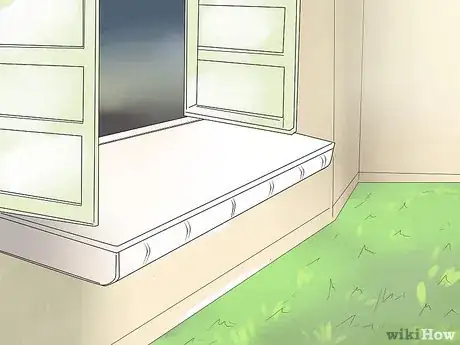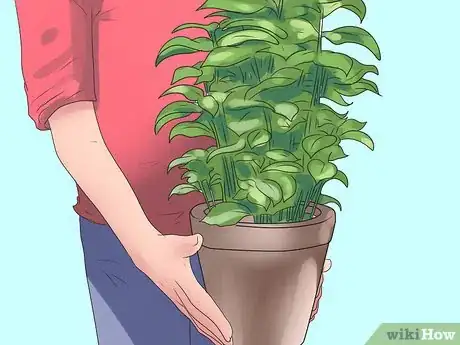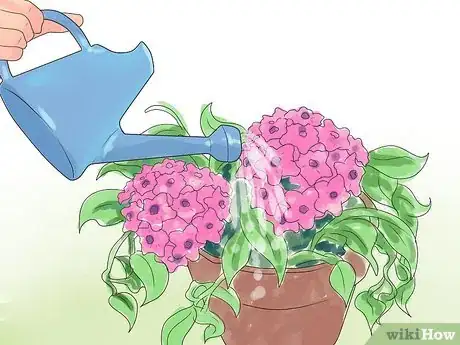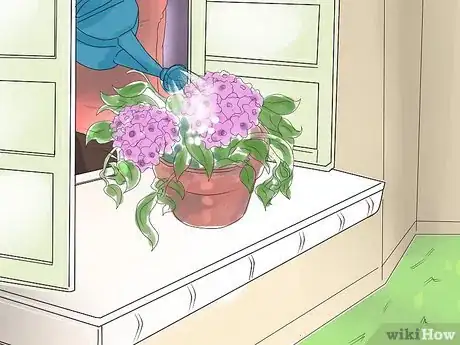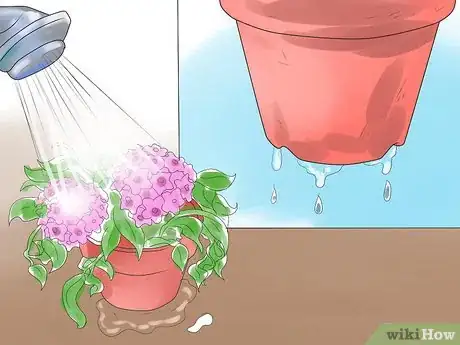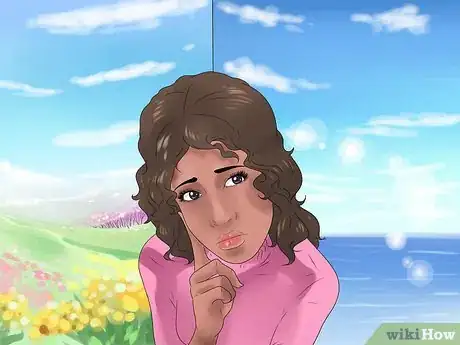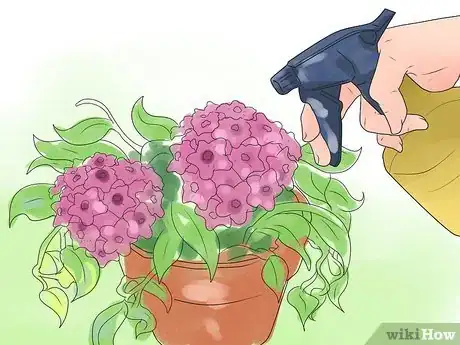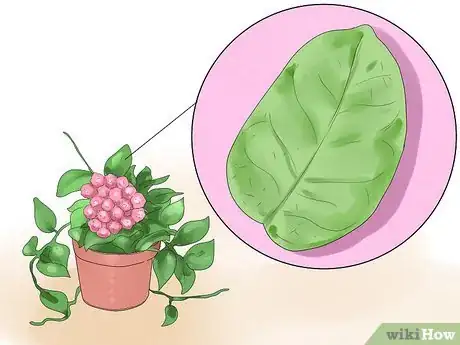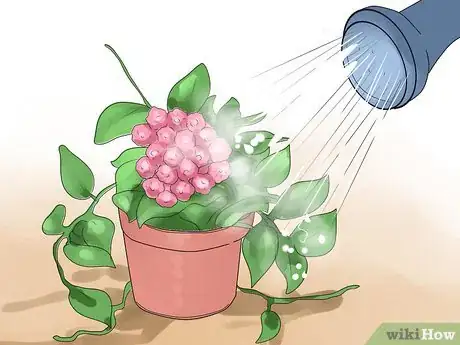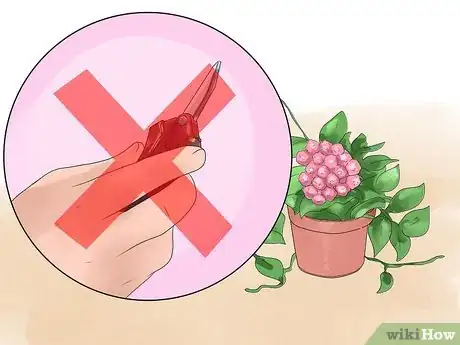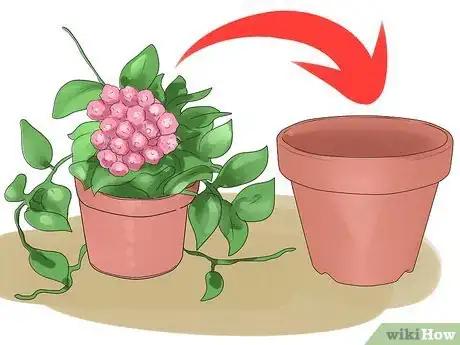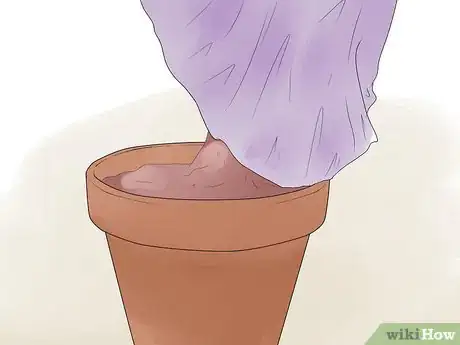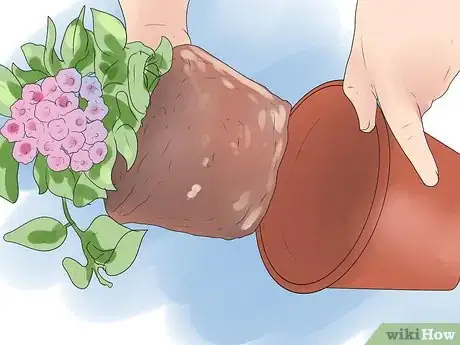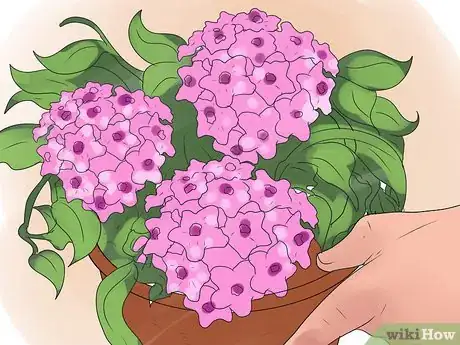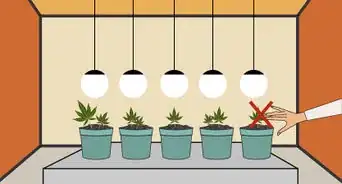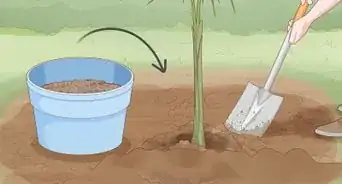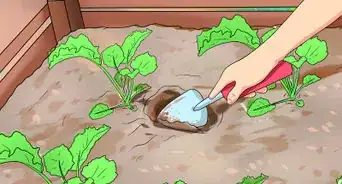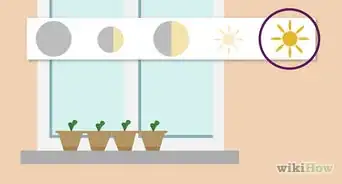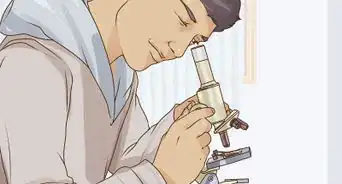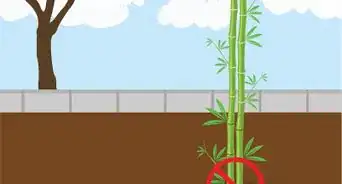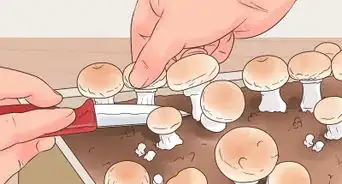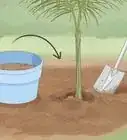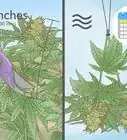This article was co-authored by Harmony Corelitz. Harmony Corelitz is a Plant Specialist and the Ecommerce Manager at Crimson Horticultural Rarities, Inc, a boutiue offering rare plants, flower arragements, and handmade goods. Harmony grew up helping her parents run their family business in plant maintenance and interior plantscaping. Harmony specializes in indoor plant care and interior plant design. Prior to her workwith Crimson Horticultural Rarities, she started her pop-up plant and vintage home goods shop called Younger Child and helped her former employer, Plants and Friends, grow and expand to two locations. She holds a BA from the University of San Francisco.
wikiHow marks an article as reader-approved once it receives enough positive feedback. This article received 22 testimonials and 96% of readers who voted found it helpful, earning it our reader-approved status.
This article has been viewed 199,306 times.
Hoya plants (Hoya carnosa) are also commonly known as wax plants because their leaves and flowers look like they are carved from wax. While they can be grown outdoors in USDA Hardiness Zones 9 to 11 (meaning they can stand temperatures that dip down to 20 degrees Fahrenheit, or -3.9 degrees Celsius),[1] they are most commonly grown indoors. This species is one of the easiest flowering houseplants to grow successfully. Their long, trailing stems can be trained to grow up a small trellis or the plant can be grown in a hanging container with the long stems dangling down.[2] When Hoya plants get big enough, they will produce round umbels or clusters of star-shaped flowers.
Steps
Giving Your Hoya Light and Water
-
1Pick out a bright spot for your Hoya. In particular, look for a spot near an north- or east-facing window so your Hoya can get plenty of natural light.[3] Hoyas do best in bright, indirect sunlight throughout the day, though they also prefer to have two to four hours of direct sunlight.
- If you have a south- or west-facing window, keep your Hoya about 3–5 ft (0.91–1.52 m) away from it. If it's too close, the leaves can get sunburned.[4]
-
2Move your older plant if it has stopped blooming as much. A two- to three-year old plant that does not bloom is probably not getting enough sunlight. If this occurs, try exposing it to another hour or two of direct sunlight.Advertisement
-
3Water Hoya plants when the potting soil becomes almost completely dry. Use room-temperature water that has been “aged” or left sitting in an open container for at least 24 to 36 hours. Hoya plants are tropical plants that could be stressed by cold tap water.
- Letting the water sit for 24 to 36 hours also allows chlorine and fluorine dissipate naturally. Chlorine and fluorine are chemicals commonly found in tap water that can potentially harm plants.
-
4Water your plant in the morning. This allows the moisture to be available to the plant throughout the day. Doing this also ensures that the leaves will dry before temperatures cool at night.
- Let the soil dry out about three-quarters of the way before you water it again. Since Hoyas are succulents, they hold a lot of water in their leaves, so you don't need to keep the soil too moist.[5]
-
5Pour the water evenly over the soil until it drains from the bottom of the pot. Empty the catch basin beneath the pot after the water drains through. Water left in the catch basin could be absorbed back up into the potting soil, keeping the roots too wet and depriving them of oxygen.
- Hoya plant roots need oxygen to keep them healthy. If the roots are kept too wet they could develop root rot.
-
6Keep the season in mind. Hoyas need to be watered more often during the spring and summer while they are actively growing and less often during the fall and winter.[6]
- If a Hoya plant begins to drop its leaves, it is probably being watered too often. Let the soil dry a little more before watering it again.
Feeding Your Hoya
-
1Fertilize Hoya plants with a balanced, water-soluble houseplant fertilizer. Do this every three to four weeks during the spring and summer. Fertilizer with a ratio of 5-10-5, 8-8-8 or 10-10-10 is fine.[7]
- A common dilution rate is 1 teaspoon per gallon of water, but this varies.
- The dilution rate and application frequency may need to be adjusted based on an individual Hoya plant’s needs.
-
2Adjust the frequency that you feed your plant based on the plant’s health. If the leaves and stems become pale, the Hoya needs to be given fertilizer every two weeks. If new leaves are smaller and darker than usual with shorter stems between the leaves, give the Hoya fertilizer every six weeks.
-
3Water your plant before fertilizing it. Mix the solution up and pour it evenly over the soil immediately following a regular watering. Do not give Hoyas fertilizer solution when the potting soil is dry as it could burn their roots. They should not get any fertilizer during the fall and winter.
-
4Do not remove the spent flower stems after your Hoya blooms. It will produce flowers on those stems again the next time it blooms. Also, do not move the Hoya after it begins to develop new flower buds. Moving the Hoya could disturb it and cause it to drop the buds before they open.
-
5Repot Hoyas only when they are completely pot-bound. The container will be packed with roots when it is ready to be repotted. Being pot-bound encourages Hoyas to bloom. Repot the Hoya into a container with drain holes that is only one size larger than the current container.[8]
-
6Use a peat-based commercial potting soil that contains perlite for improved drainage. Read the ingredients on the potting soil bag. It should be primarily sphagnum peat moss. Pour an inch or two of potting soil into the new container.
- You can also use a combination of three-quarters succulent mix with one-quarter potting soil.[9]
-
7Turn the Hoya on its side and gently pull it out of the old container. If it seems to be stuck, run a butter knife around the inside of the container to loosen the roots.
-
8Set the Hoya in the new container. Finish filling the container with potting soil. Water the Hoya generously to help settle the soil around the roots.
Expert Q&A
Did you know you can get expert answers for this article?
Unlock expert answers by supporting wikiHow
-
QuestionWhat potting mix should I use for a Hoya?
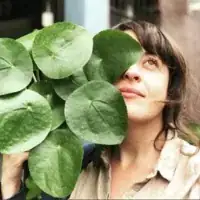 Harmony CorelitzHarmony Corelitz is a Plant Specialist and the Ecommerce Manager at Crimson Horticultural Rarities, Inc, a boutiue offering rare plants, flower arragements, and handmade goods. Harmony grew up helping her parents run their family business in plant maintenance and interior plantscaping. Harmony specializes in indoor plant care and interior plant design. Prior to her workwith Crimson Horticultural Rarities, she started her pop-up plant and vintage home goods shop called Younger Child and helped her former employer, Plants and Friends, grow and expand to two locations. She holds a BA from the University of San Francisco.
Harmony CorelitzHarmony Corelitz is a Plant Specialist and the Ecommerce Manager at Crimson Horticultural Rarities, Inc, a boutiue offering rare plants, flower arragements, and handmade goods. Harmony grew up helping her parents run their family business in plant maintenance and interior plantscaping. Harmony specializes in indoor plant care and interior plant design. Prior to her workwith Crimson Horticultural Rarities, she started her pop-up plant and vintage home goods shop called Younger Child and helped her former employer, Plants and Friends, grow and expand to two locations. She holds a BA from the University of San Francisco.
Plant Specialist
-
QuestionHow often should I water my Hoya?
 Harmony CorelitzHarmony Corelitz is a Plant Specialist and the Ecommerce Manager at Crimson Horticultural Rarities, Inc, a boutiue offering rare plants, flower arragements, and handmade goods. Harmony grew up helping her parents run their family business in plant maintenance and interior plantscaping. Harmony specializes in indoor plant care and interior plant design. Prior to her workwith Crimson Horticultural Rarities, she started her pop-up plant and vintage home goods shop called Younger Child and helped her former employer, Plants and Friends, grow and expand to two locations. She holds a BA from the University of San Francisco.
Harmony CorelitzHarmony Corelitz is a Plant Specialist and the Ecommerce Manager at Crimson Horticultural Rarities, Inc, a boutiue offering rare plants, flower arragements, and handmade goods. Harmony grew up helping her parents run their family business in plant maintenance and interior plantscaping. Harmony specializes in indoor plant care and interior plant design. Prior to her workwith Crimson Horticultural Rarities, she started her pop-up plant and vintage home goods shop called Younger Child and helped her former employer, Plants and Friends, grow and expand to two locations. She holds a BA from the University of San Francisco.
Plant Specialist
-
QuestionHow much light do Hoyas need?
 Harmony CorelitzHarmony Corelitz is a Plant Specialist and the Ecommerce Manager at Crimson Horticultural Rarities, Inc, a boutiue offering rare plants, flower arragements, and handmade goods. Harmony grew up helping her parents run their family business in plant maintenance and interior plantscaping. Harmony specializes in indoor plant care and interior plant design. Prior to her workwith Crimson Horticultural Rarities, she started her pop-up plant and vintage home goods shop called Younger Child and helped her former employer, Plants and Friends, grow and expand to two locations. She holds a BA from the University of San Francisco.
Harmony CorelitzHarmony Corelitz is a Plant Specialist and the Ecommerce Manager at Crimson Horticultural Rarities, Inc, a boutiue offering rare plants, flower arragements, and handmade goods. Harmony grew up helping her parents run their family business in plant maintenance and interior plantscaping. Harmony specializes in indoor plant care and interior plant design. Prior to her workwith Crimson Horticultural Rarities, she started her pop-up plant and vintage home goods shop called Younger Child and helped her former employer, Plants and Friends, grow and expand to two locations. She holds a BA from the University of San Francisco.
Plant Specialist
References
- ↑ http://planthardiness.ars.usda.gov/PHZMWeb/
- ↑ http://www.missouribotanicalgarden.org/PlantFinder/PlantFinderDetails.aspx?kempercode=b537
- ↑ Harmony Corelitz. Plant Specialist. Expert Interview. 4 December 2020.
- ↑ Harmony Corelitz. Plant Specialist. Expert Interview. 4 December 2020.
- ↑ Harmony Corelitz. Plant Specialist. Expert Interview. 4 December 2020.
- ↑ http://www.floridata.com/ref/h/Hoya_carnosa.cfm
- ↑ http://extension.uga.edu/publications/detail.cfm?number=B1318#nutrition
- ↑ http://extension.uga.edu/publications/detail.cfm?number=B1318#nutrition
- ↑ Harmony Corelitz. Plant Specialist. Expert Interview. 4 December 2020.
About This Article
To care for a Hoya plant, place it near an east or west-facing window, so it can get a few hours of indirect sunlight a day. When its potting soil becomes very dry, add warm water to the pot, since Hoya plants are tropical and don’t respond well to cold water. Keep in mind that Hoyas need to be watered more often during spring and summer, but less often during fall and winter. If its leaves start to fall off, try watering it less often to let the soil dry a bit. You should also fertilize your Hoya plant with a balanced, water-soluble houseplant fertilizer every 3-4 weeks to make sure it gets the nutrients it needs. For more tips, including how and when to repot your Hoya plant, read on!
